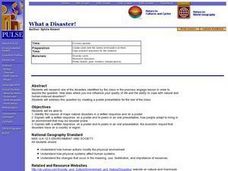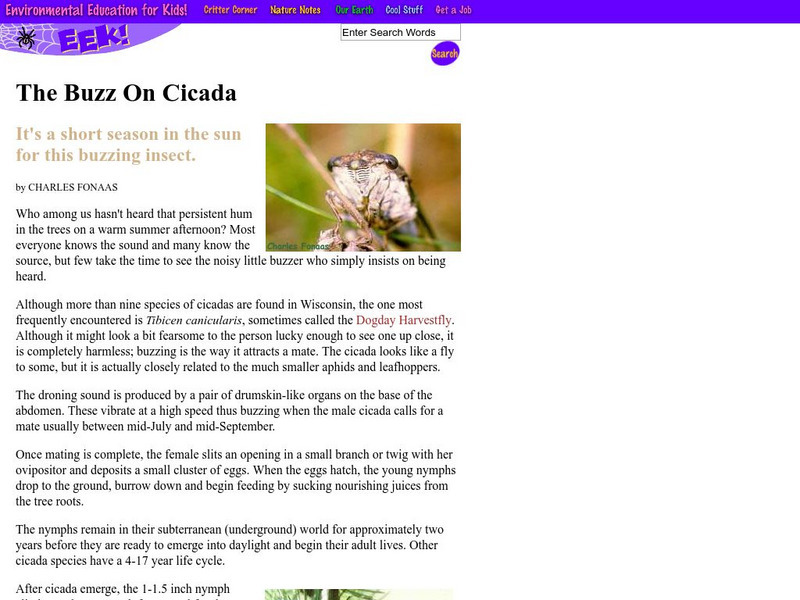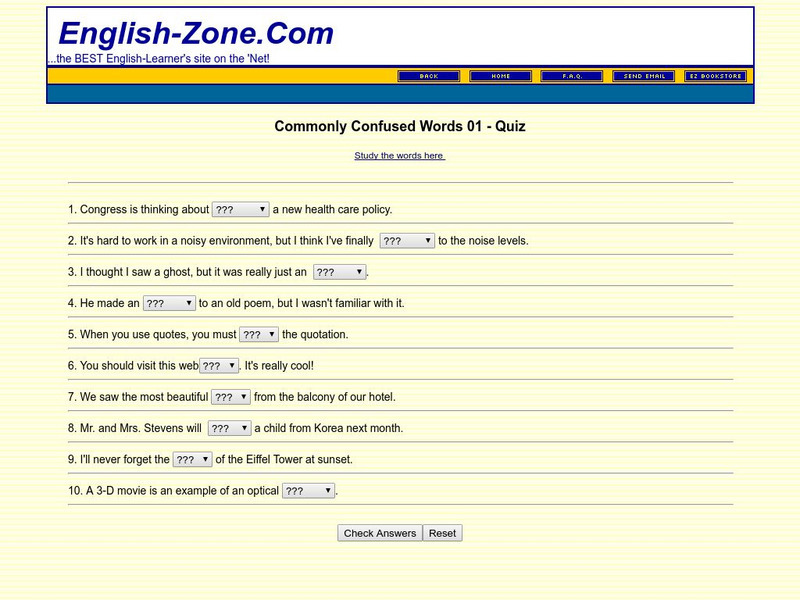Curated OER
Survival Strategies and Adaptation in Insects
Third graders investigate insects and their adaptations that help them survive. In this survival strategies lesson, 3rd graders view photographs of insects and discuss the adaptations that each one uses to survive, including camouflage...
Curated OER
Mammals: Mammals and Their Ways
Students, in groups, observe, collect data, and analyze mammal behaviors.
Curated OER
How Do Adaptations Help Living Things?
In this adaptations worksheet, students will brainstorm a problem that a living thing might face in its environment. Then students will write down what solution or adaptation that living thing has that allows it to survive that...
Curated OER
What a Disaster!
Students identify the causes of major natural disasters in a written response and on a poster. They explain with a written response, on a poster and to peers in an oral presentation, how people adapt to living in an environment that may...
Curated OER
A Tale of Two Cranes How Do Wild and Costume-raised Whoopers Compare?
Young scholars explore what young cranes need to do to survive.
Nature Conservancy
Nature Works Everywhere: Climate Change and the Role of Nature in Resilience
Students will examine the ways that humans have impacted Earth, and then determine how well their home state is prepared for the impacts of climate change. [6 min, 55 sec] Includes lesson plan and studnet handouts.
BBC
Bbc Schools: Ks2 Bitesize: Science: Living Things: Plant and Animal Habitats
Place the aliens in the habitats where they can survive the best. Following the activity, read more about plant and animal habitats, and then take a quick quiz to check for understanding.
E-learning for Kids
E Learning for Kids: Science: Iceland: What Are Adaptations?
Join Ike when he travels in the Arctic to learn about how animals adapt to cold environments.
Other
My Science Box: Is It Alive?
A lesson plan that introduces students to the concept of classifying objects as either living or non-living. From this lesson, students begin to think about the necessary characteristics of life.
University of California
Understanding Evolution: Microevolution
Get an overview of the process of microevolution.
Read Works
Read Works: Hidden From View
[Free Registration/Login Required] An informational text about different ways animals are able to camouflage themselves. A question sheet is available to help students build skills in reading comprehension.
Read Works
Read Works: Animals Get Ready
[Free Registration/Login Required] Students read about how different types of animals prepare for winter. A question sheet is available to help students build skills in classifying and categorizing.
Read Works
Read Works: Animals Get Ready
[Free Registration/Login Required] An informational text exploring different ways animals prepare for winter. A question sheet is available to help students build skills in reading comprehension.
E-learning for Kids
E Learning for Kids: Nova Zembla: How Does Temperature Affect Plant Growth?
Viktor brought his pet plant on his trip to Nova Zembla. Help him figure out what to do to take care of the plant.
Environmental Education for Kids
Eek!: Cicada
This site provides a brief but concise description of this interesting insect. Grades 4-8.
English Zone
English zone.com: Commonly Confused Words 01 Quiz
Definitions of seven commonly confused words (adapt/adopt, allusion/illusion, cite/site/sight) followed by ten sentences where students choose the correct words to fill in the blanks. When finished, students can check their answers to...

















